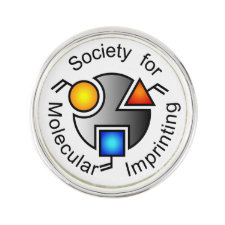
Authors: Chen J, Bai HP, Li YD, Zhang JY, Liu P, Cao Q
Article Title: Stripping voltammetric determination of europium via ultraviolet-trigger synthesis of ion imprinted membrane.
Publication date: 2018
Journal: Sensors and Actuators B: Chemical
Volume: 271
Page numbers: 329-335.
DOI: 10.1016/j.snb.2018.05.127
Alternative URL: https://www.sciencedirect.com/science/article/pii/S0925400518310360
Abstract: To solve the problem that the ion-imprinted membrane modified on glassy carbon electrode (GCE) usually easily falls off, a screen printed electrode (SPE) which has a relative rough surface than GCE, was selected as the base electrode for preparation of an ion-imprinted sensor for determination of Eu(III). The sensor was obtained by modifying SPE successively with carboxylic multiwalled carbon nanotubes (MWCNs-COOH) as signal amplifying element and Eu(III) ion-imprinted membrane (Eu(III)-IIM) as specific recognition material. To avoid damaging SPE by thermal initiation, the Eu(III)-IIM was prepared via radical photopolymerization at 380 nm using azobisisobutyronitrile (AIBN) as initiator. Differential pulse adsorptive stripping voltammetry (DPASV) was used for determination of Eu3+ by the obtained sensor. After the detection condition was optimized in detail, the sensor showed a linear response to Eu3+ in the concentration range of 1.0 x 10-7 - 1.0 x 10-3 mol L-1 with the detection limit of 4.0 x 10-8 mol L-1. The obtained sensor possesses of good regeneration, stability and practicability, it can maintain more than 95% of its original response after used more than 30 times or stored in the water for two months. The satisfactory results with the relative standard deviation (RSD) of less than 3.5% (n = 5) were obtained for the determination of europium in water samples by the novel sensor
Template and target information: europium ion, Eu(III)
Author keywords: europium, Ultraviolet trigger, Screen printed electrode, Ion imprinted membrane



Join the Society for Molecular Imprinting

New items RSS feed
Sign-up for e-mail updates:
Choose between receiving an occasional newsletter or more frequent e-mail alerts.
Click here to go to the sign-up page.
Is your name elemental or peptidic? Enter your name and find out by clicking either of the buttons below!
Other products you may like:
 MIPdatabase
MIPdatabase









